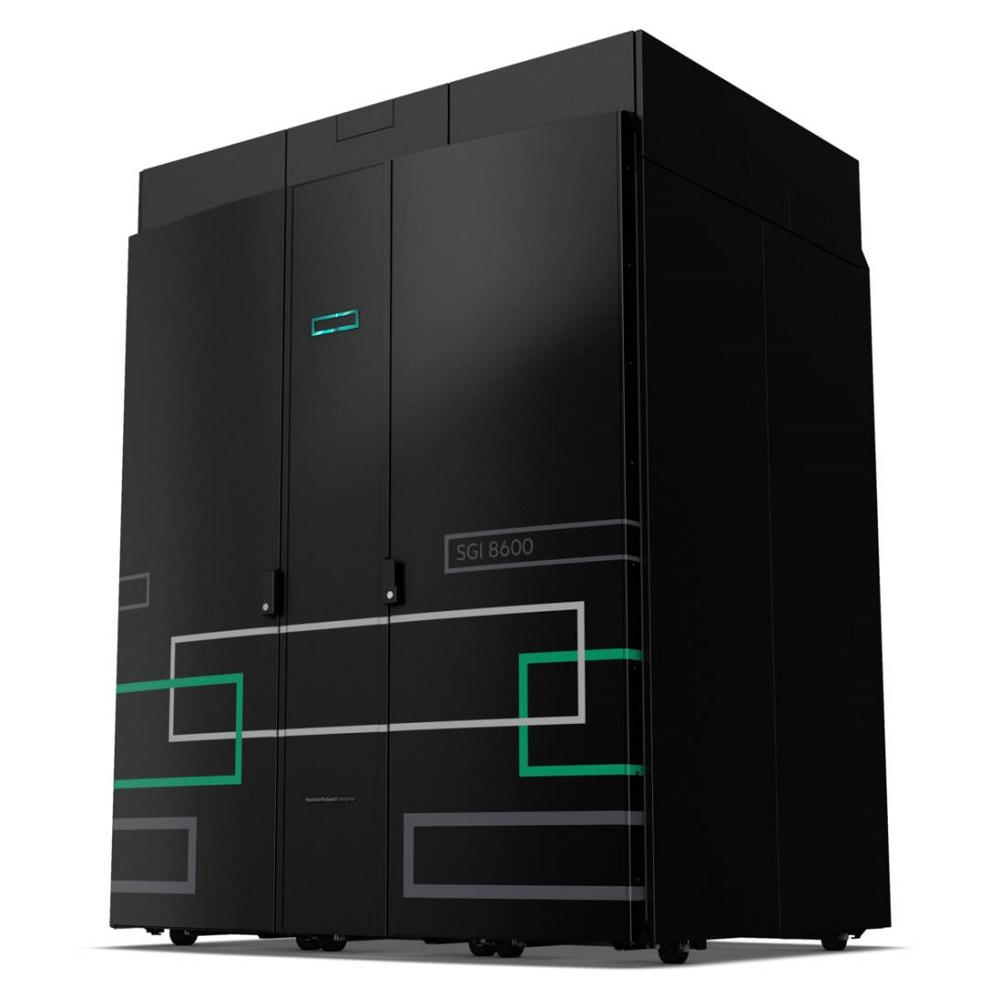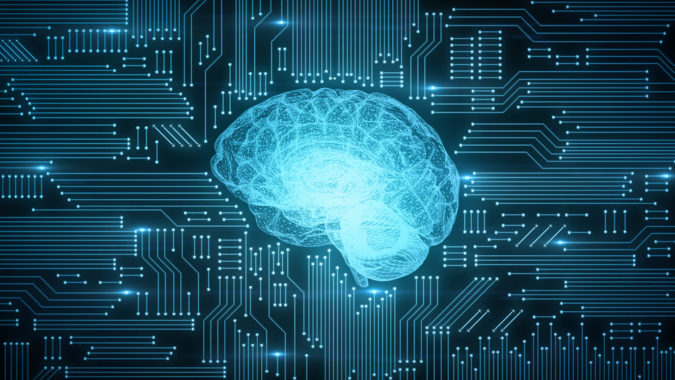HPE and the Ecole Polytechnique Federale de Lausannne (EPFL) Blue Brain Project yesterday introduced Blue Brain 5, a new supercomputer built by HPE, which displaces a long line of IBM Blue Gene systems that previously supported the 13-year-old Blue Brain Project whose ambitious goal is to “digitally reconstruct and simulate” the human brain. The Blue Brain project, which has occasionally stirred debate among European brain researchers, came into being in June 2005 when IBM and EPFL signed an agreement to launch the project and install a Blue Gene at EPFL – hence the name Blue Brain for the machine.
The most recent system, Blue Brain 4, was a Blue Gene/Q machine installed in 2014 at the Swiss National Computing Centre (CSCS). When IBM stopped development of Blue Gene around 2015, EPFL was forced to broaden its search for next generation supercomputing technology, said Felix Shürmann, EPFL, co-director EPFL Blue Brain Project during a press briefing yesterday. (Project timeline posted on the project website.)
Many vendors (presumably IBM among them) responded to its RFP and in the end, “[HPE] not only fulfilled the technical specs and scored well on the price, but I think what is important about HPE is that they are a technology company with their own research and forward-looking perspective to computing and the upcoming challenges, and this notion that this is a technology partner that allows us to navigate this space of available technologies and make the right choices, that was an important part in the selection process,” said Shürmann.

This is clearly a win for HPE although IBM may not be losing any sleep given its giant success on the most recent Top500 list with Summit (122PF, Rmax) on top and Sierra (71.6PF, Rmax) at number three (See HPCwire article, GPUs Power Five of World’s Top Seven Supercomputers).
Bragging rights aside, the new HPE machine, say both HPE and EPFL, was carefully designed to meet the massive data handling and simulation requirements of modern brain research. Repeating numbers you have likely already heard, there are on the order of 100 billion neurons and 100-to-1,000 trillion synapses in the human brain. Moreover there is a bewildering number of ways in which neurons and synapses interact helped along by a rather long list of other players (proteins, glial cells, etc.) all operating in a multi-scale system that spans the tiny (molecules) to the comparatively large (regions of the brain).
Henry Markram, EPFL Brain Project founder and co-director, said, “To gather all this data and to organize it and to make sense of how all this data fits together is really one of the biggest big data challenges that exists today.”
Schürmann added, “The Blue Brain Project’s scientific mission is critically dependent on our supercomputing capabilities. Modeling an individual neuron at Blue Brain today leads to around 20,000 ordinary differential equations – when modeling entire brain regions, this quickly raises to 100 billion equations that have to be solved concurrently. HPE helps us to navigate the challenging technology landscape in supercomputing.”
The Blue Brain 5 core system is an HPE SGI 8600 system comprised of 372 compute nodes. HPE says it delivers 1.06 petaflops of peak performance and can be easily scaled up. The system has 94 terabytes of memory and runs Intel Xeon Gold 6140 and Intel Xeon Phi 7230 processors as well as Nvidia Tesla V100 graphic processors. Blue Brain 5 uses single and dual-rail Mellanox InfiniBand high-performance networks and has 4 petabytes of high-performance storage from DataDirect Networks (DDN), delivering more than 50 GB/s aggregated bandwidth, associated with an innovative 80 GB/s Infinite Memory Engine (IME) flash-based burst buffer. Blue Brain 5 was installed at CSCS this spring and is now running at full production.
The secret sauce – and HPE didn’t reveal much technical detail yesterday – is how HPE has apparently blended four systems into one. Its flexible architecture, says HPE, can host different sub systems that are specifically geared for tasks like visualization or deep learning, while being operated as one single system.
“Our first focus was on the workflow of the Blue Brain project,” said Eng Lim Goh, VP, CTO, HPC and AI, HPE. “We came up with a supercomputer that is made up of four subsystems, tightly bound together to work as one. The four subsystems include one that is strong for extracting data from storage, another subsystem was strong and designed to do well at extracting data fast from memory, the third one was for visualization, and a fourth one was a general purpose one spans across the other three. on top of that we bound the four subsystems tightly together with high bandwidth network, and in some areas doubling up on the bandwidth.”
“As you can see it was a detailed design process done by studying the workflow of the project and designing a supercomputer that matches the workflow. For example, when the workflow starts and it is trying to discover all the possible touch points from the neuron onward, the high IO bandwidth subsystem, the one that can extract data fast from storage, is first employed. After which, when simulation is actually done in detail, and at high resolution, we switch to the second subsystem where we can extract data very fast from memory. Finally when you visualize, the visualization subsystem is used. This gives you one example of how we looked at the workflow carefully and designed a system to match it,” explained Goh.
Broadly, HPE characterizes the subsystems as:
- Subsystem 1: Intel KNL, 16GB of HBM, 96GB DRAM
- Subsystem 2: Dual Intel Xeon, 768 GB memory + 4 Nvidia V100 GPUs
- Subsystem 3: Dual Intel Xeon, 384 GB memory
- Subsystem 4: Dual Intel Xeon, 384 GB memory + 2 NVME
Brain research is expensive and over the years there has been vigorous discussion over how best to spend scarce research dollars. The EPFL Blue Brain project, led by Markram, sometimes drew criticism for its approach. In recent years, the Swiss-funded Blue Brain project has become part of the broader European-wide Human Brain Project (HBP) whose compass is broader. The HBP is exploring everything from new neuromorphic processor technology, to bioinformatics tools development, and specific disease research.
Said Markram, “What is very different and unique about the Blue Brain Project is that we are very much focused on the biology. Our goal is to be able to capture [brain biology] with as high fidelity as possible – as much as the computing allows us and as the biological data informs us – to be able to build models that are as accurate and as the actual biological specimen. So in a way it is a digital reconstruction.”

The insights can later be applied to other cognitive and biomedical research. One of the Blue Brain Project’s discoveries, said Markram, is how ‘micro circuits’ in the brain are structured and behave.
“We deliberately chose the micro circuit. It’s the minimal systems of neurons. Neurons need other neurons. There’s a minimum number of them [to form a micro circuit]. In the mammalian cortex that turned out to be 30,000, which is a number we discovered through the simulation; it was not a number that was known in experiments or through theory. That’s the minimum ecosystem. We wanted to identify that first because that provides the sort of unit of operation in the mammalian neocortex,” said Markram.
“This gave us a new insight into what the brain is trying to process but what we don’t know today is how that changes when you go from a micro circuit to a brain region such as the touch region or the vision region or the hearing region. These are larger regions [and] can be composed of several hundreds of these micro circuits. It’s a question of how all these micro circuits interact that we are now going to be able to explore with the kind of computing that we have obtained with HPE. That will allow us to begin understanding how entire sensory modalities are forming in response to when the sensory input comes in, which neurons are active, which synapses are active, and how these micro circuits are interacting to sculpture an electrical landscape which is effectively coding information for what is happening in the outside world.”
HPE has long been active in life sciences research including NIH’s Living Heart Project and the work with the Center for Neurodegenerative Diseases and the University of Bonn targeting, among other things Alzheimer’s Disease.
During yesterday’s press briefing, a question about needing exascale compute power came up. It will indeed be helpful agreed EPFL and HPE. HPE, of course, has been an active participant in the Path Forward program in the U.S. although it isn’t currently the prime contractor on any U.S.-funded pre-exascale machines. Markram was quick to note that simulating a full human brain was probably not realistic any time soon.
“It depends on the resolution of the simulation,” he said. “If you take it to the extreme level, as I’ve said, you have a billion organic proteins in a single neuron and you got 100 billion of them and their interactions are happening at sort of microsecond scale. If you had to do the calculation, if you wanted to simulate every molecule in the human brain you would probably need a computer that’s about 1030 flops so that’s way beyond the yotta scale (1024 ). This is not what we are talking about when we say we are going to simulate the brain.
“What we are doing is building – with the constraints of what the computing can allow us – technologies [that] we call multiscale simulation. That means that a lot of the big parts of the brain would be simulated at low resolution. That neurons may not be as elaborate, they may be even point neurons. Not all the molecules in all of the neurons would be simulated. But when you identify an area of interest, you would be able to zoom in effectively and as you zoom in you’d be able to see the region, the activity there at much higher resolution. We are building models that allow you to go down to not just the neurons but the supporting cell which are of course ether glial cells and even down to the blood vessels to see how neurons are being supported by the blood supply.”
Big Science takes time and, increasingly, lots of computational power.
Blue Brain Project video:





























































